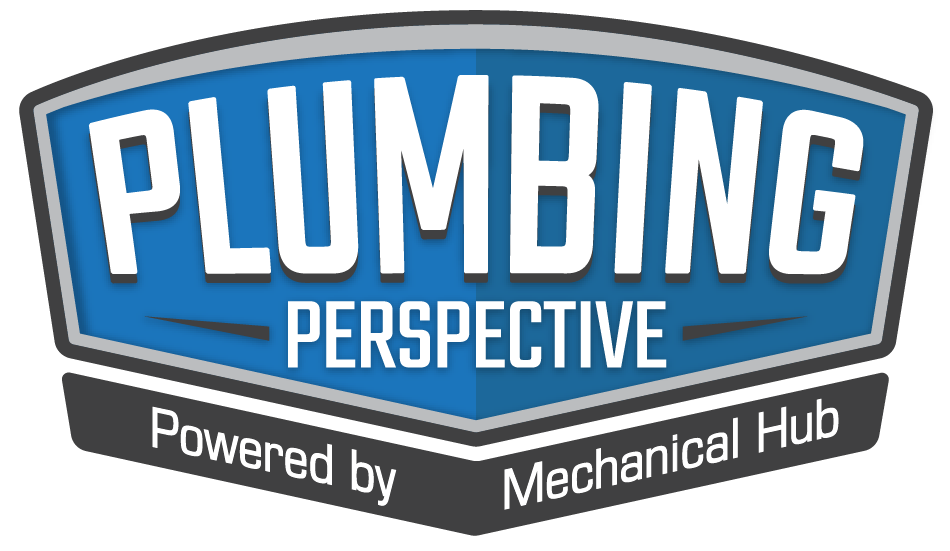The water you rely on for drinking and cleaning should be just as pure and clear as essential. While a slightly higher mineral content may not directly harm you, it can cause significant issues for your plumbing over time. Ensure the water flowing from your taps is safe for consumption. Water quality plays a key Read more
Water Quality
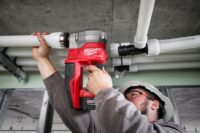
The water you rely on for drinking and cleaning should be just as pure and clear as essential. While a slightly higher mineral content may not directly harm you, it can cause significant issues for your plumbing over time. Ensure the water flowing from your taps is safe for consumption. Water quality plays a key role in many aspects of your life. Clean water is essential for your health and daily routines, as well as for maintaining the condition of your clothes and dishes.
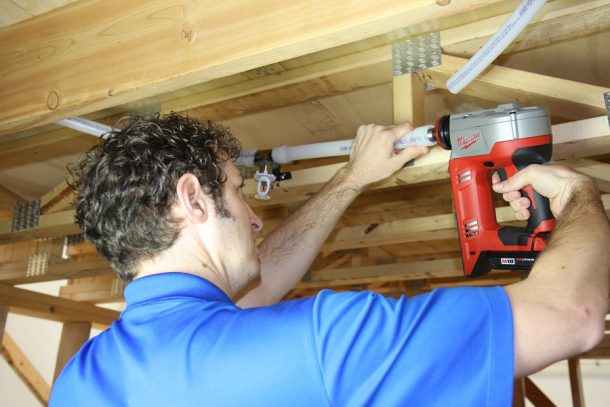
Schedule a Plumbing Pipe Inspection
Even today, many homes still rely on outdated and hazardous lead pipes. Some also use cast iron pipes, which are less harmful than lead and prone to rust over time. Signs like brownish tap water or visible rust particles often indicate that your home’s metal pipes are deteriorating.
Additionally, rust in your water supply might stem from an aging water heater, where corrosion can occur within the tank or on components in tankless systems. To address these issues, consult a plumber to explore updated plumbing solutions like PVC or durable plastic pipes, which are excellent long-term replacements.
Set Up a Water Filtration System
Water treatment systems improve the quality of the water in your home. Many water supplies contain hardness, which causes scales to accumulate on appliances, block showerheads, make fabrics feel coarse, and reduce water flow through pipes.
Adding a water softener can resolve these issues by removing hardness. These systems use a unique material to eliminate magnesium and calcium ions responsible for scaling. They can be installed to treat the water supply for your entire home, providing an affordable way to enjoy soft water. Get San Antonio water softeners installed soon to take advantage of these benefits for your home.
Schedule Your Septic Tank Cleaning
If you own a septic tank, have it emptied before it overflows into your yard. An overflow could cause raw sewage to seep into the groundwater, and potentially even your well water. For older septic tanks, consider speaking with a plumber about upgrading to a newer system that directs greywater, like the water from washing laundry, dishes, or bathing, out into your yard instead of into the septic tank. This setup can help water your lawn while reducing the tank’s filling speed. However, this option may not be permitted in certain states.
Flushing
Let cold water taps run for two minutes before using it for drinking or cooking. The quality of water can decrease when it sits unused in pipes for several hours. Alternatively, everyday household activities can help flush the pipes and draw fresh water from the distribution system into your home. These activities include:
- Running the dishwasher
- Taking a shower
- Doing laundry
- Flushing the toilet
Replace Your Tap Aerators
Tap aerators are small screens attached to the ends of taps. While they don’t filter water as thoroughly as dedicated water filters, they do help screen the water passing through. Over time, contaminants and sediment can build up in the aerators, impacting the water’s taste, flow, and pressure.
Replacing tap aerators occasionally is a good idea to maintain water quality and performance. They’re affordable and simple to install, just screw them on or off. You can either swap out the screens or replace the entire aerator when replacing.
Endnote
There are many ways to enhance your water quality, and this post covers just a few of them. By applying these approaches, you can ensure your water is clean and safe. Your water quality plays a key role in both your health and overall quality of life. Taking steps to improve it will lead to meaningful improvements in your well-being.
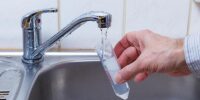
Ontario, Calif. — With the U.S. Environmental Protection Agency (EPA) issuing the first national drinking water standards for per- and polyfluoroalkyl substances (PFAS), the International Association of Plumbing and Mechanical Officials (IAPMO®) continues to lend its expertise and leadership to helping manufacturers and the industry navigate the changes and ensure a seamless transition. IAPMO’s subject Read more
Ontario, Calif. — With the U.S. Environmental Protection Agency (EPA) issuing the first national drinking water standards for per- and polyfluoroalkyl substances (PFAS), the International Association of Plumbing and Mechanical Officials (IAPMO®) continues to lend its expertise and leadership to helping manufacturers and the industry navigate the changes and ensure a seamless transition.
IAPMO’s subject matter experts will participate on committees and working groups for numerous relevant standards, including NSF/ANSI/CAN 61: Drinking Water Components — Health Effects; NSF/ANSI 53: Drinking Water Treatment Units — Health Effects; NSF/ANSI 58: Reverse Osmosis Drinking Water Treatment Systems; and ASSE LEC 2006: Point of Entry Reverse Osmosis Systems. IAPMO strongly encourages manufacturers of applicable products to join the process to ensure their voices are heard as these important standards are updated. The EPA has provided a fact sheet on home filters to reduce PFAS levels.
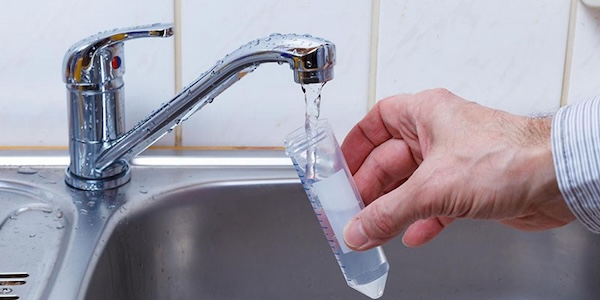
In addition, IAPMO has published documents with vital information plumbing and product manufacturers need to know before the restrictions become mandatory, including an overview of the standards development process and how to get involved. There is also an opportunity to sign up for notifications about committees and updates. The information is available at https://iapmort.org/pfas-compliance-guide.
“The EPA rule means five PFAS chemicals will be added to the pass/failure requirements in the NSF/ANSI 61 standard. It’s a significant change,” IAPMO Chief Technical Services Officer Tom Palkon said. “IAPMO R&T is already equipped to provide testing to standards that govern products that may be affected by this new rule. We welcome questions and concerns from manufacturers that seek clarity.”
Exposure to PFAS, also known as “forever chemicals,” has been linked to an increased risk of certain types of cancers, impacts to the immune system and thyroid, and reproductive and developmental effects.
This final rule represents the most significant step to protect public health under EPA’s PFAS Strategic Roadmap. The final rule will reduce PFAS exposure for approximately 100 million people, prevent thousands of deaths, and reduce tens of thousands of serious illnesses. The announcement complements President Biden’s government-wide action plan to combat PFAS pollution. This Final Rule will impact more than 66,000 public water systems by 2027, these public water systems must monitor and provide three years of initial monitoring. By 2029, these systems will have five years to implement solutions to reduce PFAS, and these systems where drinking water violates one of more MCLs must take action and must notify the public of the violation.
The rule establishes legally enforceable levels for several PFAS known to occur individually and as mixtures in drinking water. It sets limits for five individual PFAS: PFOA, PFOS, PFNA, PFHxS, and HFPO-DA (also known as “GenX Chemicals”), as well as a limit for mixtures of any two or more of four PFAS: PFNA, PFHxS, PFBS, and “GenX chemicals.” By reducing exposure to PFAS, this final rule will help advance public health and safety.
The EPA’s free Water Technical Assistance program (WATERTA) is providing support and access to federal funds of underserved and disadvantaged communities to comply with the new Rule. The EPA also will offer a free webinar April 30 on various aspects of the Final Rule.
Manufacturers have long trusted IAPMO R&T for its foresight in assisting them to meet the dynamic legislative demands on their water treatment products, faucets, valves, fittings and other products that contact drinking water. IAPMO R&T has been certifying products to be in compliance with standards governing their use since 1936.

By Jonathan Simon Most homeowners don’t think about the plumbing materials in their homes until a problem occurs. Yet, plumbing materials play a significant role in their day-to-day quality of life, especially when the system doesn’t deliver on their expectations. Some plumbing systems can contribute to issues like poor water pressure and water quality. Then Read more
By Jonathan Simon
Most homeowners don’t think about the plumbing materials in their homes until a problem occurs. Yet, plumbing materials play a significant role in their day-to-day quality of life, especially when the system doesn’t deliver on their expectations.
Some plumbing systems can contribute to issues like poor water pressure and water quality. Then, of course, there are the reliability problems that can arise when the plumbing system proves incompatible with local water conditions, leading to failures and water damage that can turn a homeowner’s life upside down.
So, while homeowners don’t spend much time thinking about plumbing materials, plumbers should. Here are four ways that you can protect your customers thanks to the performance of CPVC.
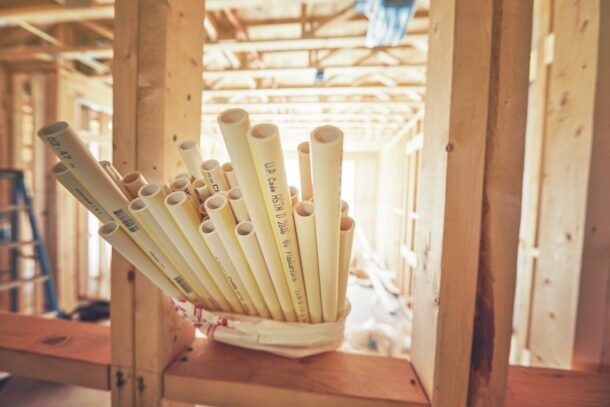
Water Pressure
Low water pressure can be frustrating for homeowners every time they shower, and the design of the plumbing system could be a contributing factor.
Plumbing systems using insert fittings where the fitting goes into the pipe will reduce the system’s diameter at the fitting, restricting flow and creating a much larger pressure loss than occurs with systems where the pipe is inserted into the fitting, such as CPVC and copper. Even expansion fittings, which have the largest internal diameter of the insert fittings, can cause up to 7x more pressure loss in the system compared to a CPVC or copper fitting.
Insert fittings can also create turbulent zones in the pipe as water jets out of the restriction created by the fitting. These higher-velocity zones may require that the design velocity of the system be reduced to remain within manufacturer specifications.
Plumbers can compensate for the issues created by insert fittings by upsizing piping, but that adds significant cost to projects. Using larger pipe to slow down the water and reduce pressure drop can also pose challenges in areas that need to comply with water and energy efficiency standards. By minimizing pressure drop across the system, CPVC helps preserve water pressure at fixtures.
Water Quality
No plumbing system can improve water quality, but the choice of materials can minimize the risk of various sources of contamination.
One of those risks is biofilm growth. Biofilm that forms inside residential plumbing systems can contain bacteria such as E. coli, coliforms and legionella. The susceptibility of a particular material to biofilm is called its biofilm formation potential and varies across materials. Independent research has found that CPVC has a lower biofilm formation potential than other plastic plumbing systems and is consistently among the lowest of plumbing systems tested.
Permeation and leaching also present risks to residential water systems. Materials vulnerable to permeation can allow dangerous chemicals that come in contact with the outside of the pipe to enter the water supply. The U.S. EPA, in their study on Permeation and Leaching, found that vinyls such as CPVC are virtually impermeable at low levels of exposure and that polyolefin plastic plumbing materials accounted for more than three-quarters of the documented permeation incidents in the United States.
NSF 61 is the industry standard for protecting against unsafe leaching of chemicals from plumbing materials into the water supply. FlowGuard Gold CPVC is certified to NSF 61 under all water conditions. Copper and some PEX brands have limitations on their NSF 61 listings.
By reducing the risks from biofilm formation, permeation and leaching, plumbers play an important and underappreciated role in protecting the health of their customers. And while homeowners may never fully appreciate that role, they could notice the difference in water quality when materials other than CPVC are used. According to research from Virginia Tech, CPVC has the lowest impact on drinking water taste and odor of any residential plumbing material.
Reliability
In addition to good pressure and water quality, homeowners want a plumbing system they don’t have to worry about. If there’s one thing more frustrating than a water leak, it’s having a second leak soon after the damage from the first has been repaired. That was the experience of the Jackson family in Battle Ground, Washington. They had multiple plumbing system failures, one after the other, until an expert finally diagnosed the root cause of the problem as incompatibility between the plumbing material chosen for their ten-year-old home and local water conditions. When the home was repiped with CPVC, the problems disappeared.
CPVC is the only residential plumbing material that is naturally immune to chlorinated drinking water. As municipalities strive to maintain water safety through treatment methods that produce higher oxidative reduction potential in the water they supply, this is more important than ever. CPVC can perform reliably in water conditions and at temperatures, pressures and velocities that could lead to degradation and early failure in other plastic or metal plumbing systems.
Sustainability
For homeowners that prioritize the sustainability of building materials, CPVC is a very attractive choice. Based on comparisons using the National Institute of Standards (NIST) BEES software, FlowGuard Gold CPVC requires less energy to manufacture, has lower embodied energy and results in fewer emissions over its service life than PEX and copper. CPVC is also recyclable through proper centers.
In addition, FlowGuard Gold CPVC is the only residential plumbing system certified by Home Innovation Labs National Green Building Standard (NGBS) and has a lifecycle assessment to enable the material to contribute to LEED certification.
Making the Right Choice
If you’re looking to give your customers the water quality, pressure, reliability and sustainability they are looking for, CPVC is the right choice. And CPVC doesn’t just deliver benefits to homeowners. Plumbers experience lower material costs, faster installation and excellent support from leading manufacturers. To learn more, visit flowguardgold.com/plumber-resources.
Jonathan Simon is the North American residential plumbing manager for Lubrizol Advanced Materials. Half of the world’s consumers use at least one product containing a Lubrizol ingredient. Advanced materials products create and/or improve the performance of our customers’ products and enable unique performance attributes. For 60 years, FlowGuard Gold Pipe and Fittings have provided reliable hot and cold water plumbing systems to residential and commercial buildings.
Mokena, Ill. — ASSE 1090-2020, Performance Requirements for Drinking Water Atmospheric Water Generators (AWG), has been designated as an American National Standard by the American National Standards Institute (ANSI) and is now available for purchase. ASSE 1090 was created to test point of use and commercial drinking water generating devices, which are designed to create Read more
Mokena, Ill. — ASSE 1090-2020, Performance Requirements for Drinking Water Atmospheric Water Generators (AWG), has been designated as an American National Standard by the American National Standards Institute (ANSI) and is now available for purchase.
ASSE 1090 was created to test point of use and commercial drinking water generating devices, which are designed to create potable water from atmospheric humidity. Critical components of these devices include a condenser, storage tank, and filtration/disinfection controls to address potential chemical, particulate, and microbiological water contamination. The standard also includes consideration for the energy efficiency of the AWG.
ASSE 1090 started its life as ASSE LEC 2004-2019, Listing Evaluation Criteria for Drinking Water Treatment Systems Using Air as a Source. ASSE International Listing Evaluation Criteria (LEC) documents provide manufacturers with an avenue to certify unique, novel products that do not fit the scope of an existing standard. If these products gain traction and market acceptance, the LEC can then be developed into an ASSE Standard through the ANSI-accredited standards development process. ASSE 1090 is one example of an LEC that has gone through the process of becoming an ASSE American National Standard.
With AWG products, water-from-air becomes a real source of water supply in places where tap water is not available, or the quality of the tap water does not meet the consumer’s requirements. Creating a product performance standard to help ensure that these products produce safe, potable water was desired by the water treatment industry.
“Standards legitimize an industry and should also make it easier to assess solution providers,” said Frank A. Brigano, Ph.D., ASSE 1090 Working Group Member and Vice President, Senior Research Fellow, at Marmon Water, a division of Berkshire Hathaway. “The beauty of AWG systems is that they are disconnected from municipal systems and their inherent ‘issues.’ Thus, making claims of ‘free from heavy metals and organics, worry-free from boil water warnings, PFAS, etc.,’ is what makes these systems attractive.”
To become a source of drinking water under this standard, the water-from-air should meet two primary criteria:
1) The water should be produced for a reasonable cost so that it’s affordable to the user. The cost of the water is based on the energy efficiency of the atmospheric water generator system — electrical energy consumption per liter of water produced.
2) The water quality produced by the atmospheric water generator must be safe to consumers.
To purchase ASSE 1086, please visit the ASSE International Webstore at www.assewebstore.com.

Copper to replace Flint’s lead and lead-tainted galvanized iron service lines Mayor Karen Weaver and FAST Start Coordinator Michael C. McDaniel told hundreds of participants attending the Flint Water Infrastructure Summit this week that copper pipe will be used to replace the City of Flint’s entire lead and lead-tainted galvanized iron service lines. “We chose Read more
Copper to replace Flint’s lead and lead-tainted galvanized iron service lines
Mayor Karen Weaver and FAST Start Coordinator Michael C. McDaniel told hundreds of participants attending the Flint Water Infrastructure Summit this week that copper pipe will be used to replace the City of Flint’s entire lead and lead-tainted galvanized iron service lines.
“We chose copper because the residents of Flint deserve a high quality engineered material that has a history of safely conveying drinking water,” Weaver said. “With copper, we know we’re getting a long-term solution.”
McDaniel said that the decision was made after a number of factors were considered, especially the longevity of the piping and the lifetime cost of the product.
“This was a very important decision that will affect many generations to come,” McDaniel said. “My team and I conducted months of research and engaged in conversation with piping experts regarding the ideal lead replacement material for superior performance.”
The City concluded that copper was the best material for the replacement pipes because it’s durable, reliable and long-lasting. Copper piping is also impermeable, so outside chemicals such as petroleum products spilled on nearby streets or insecticides and fertilizers spread on yards can’t contaminate the water system.
Following the City’s determination, the copper industry banded together to help Flint acquire nearly 200,000 feet of copper piping, at a savings of approximately $1 million to the City, for the next phase of the FAST Start program, due to start in April.
“The copper industry will continue to provide technical guidance and educational resources wherever needed to ensure that copper piping is designed, installed and operated properly every step of the way,” said Andrew G. Kireta, Jr. of the Copper Development Association (CDA). “We are committed to helping America rebuild its aging water infrastructure.”
CDA exhibited at the Flint Water Infrastructure Summit and was selected as a speaker for the Water Infrastructure 101 Workshop. Kireta gave two, 20-minute presentations on “Why Copper is the Right Choice” for lead service line replacements and hosted an open forum to interact with attendees on questions related to this topic.
For more information about copper piping, visit www.copperservicelines.org.
